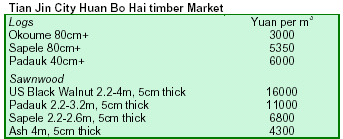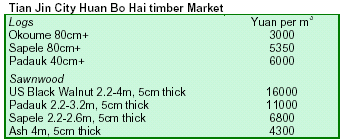|
US
Dollar Exchange Rates of 31th Jan. 2008
China Yuan
7.191
Report from China
China agrees to discontinue trade subsidies
The Chinese government signed a Memorandum of
Understanding (MOU) with the U.S. on 29 November
2002, in which China agreed to end twelve trade subsidies
on items including timber, steel and information
technology by 1 January 2008. Of the trade subsidies, nine
are export subsidies and three are import subsidies. China
does not intend to use these subsidies again, and the U.S.
has the right to file a case with the World Trade
Organization should China not comply with the terms of
the MOU. Since foreign enterprises in China manufacture
over 60% of commodities for export, it is expected that
these enterprises will be greatly affected by the changes in
subsidy policies.
China issues Catalogue of Prohibited Commodities
The Ministry of Commerce, the General Administration of
China Customs Agencies, and the State Environmental
Protection Administration of China recently issued the
¡®Catalogue of Prohibited Commodities in the Processing
Trade¡¯. Over 990 kinds of commodities are listed,
including non-recycled resources, some raw materials of
chemicals and animal products, and ¡®homemade¡¯ wooden
furniture, or furniture made exclusively from domestic
wood sources. However, furniture made of imported
timber is not listed in the Catalogue. This is significant as
furniture enterprises in the north of China mainly use
domestic timber to manufacture and export furniture.
Furniture enterprises in the south of China are less
impacted by this policy, since they mainly use imported
timber to manufacture furniture.
Zhanjiagang Port posts strong gains in timber exports
The Zhangjiagang Exit-Entry Inspection and Quarantine
Bureau reported that 2007 timber imports through the port
rose 18% in volume and 23% in value from 2006 levels.
Timber imports through the port totaled 3.35 million m3
and were valued at USD826 million. The imported timber
was from 35 countries and regions. The top three countries
exporting timber to this port were Gabon (1.17 million
m3), Papua New Guinea (990,000 m3) and the Solomon
Islands (263,500 m3), representing a year on year rise of
29%, 19% and 175% respectively. At the same time,
timber imports shipped in containers though the port
reached a record high and represented a volume of
134,000 m3.
According to local experts, imported timber from
Cameroon accounted for 37% (49,000 m3) of the total
timber imports in containers through the port. Imports
were also received from Sudan and Romania, although
their timber imports accounted for less than 100 m3.
Sawnwood imports shipped in containers also were up
94% from the previous year to 15,500 m3. It was forecast
that timber imports in containers would further increase
due to rising international ocean freight costs, as it was
cheaper and more effective to use container shipping.
Jiangmen City bolsters processing and exports of
forest products
From January to November 2007, the export value of
forest products from Jiangmen City, Guangdong Province,
was close to USD140 million. Of the total, the export
value of wood forest products was USD44.1 million, the
export value of furniture products USD90.8 million, and
the export value of bamboo, rattan, grass and willow
products USD4.82 million. These products were mainly
exported to the U.S., Japan, Southeast Asia, the EU, the
Middle East and Hong Kong.
Jiangmen City has a significant domestic supply of forest
products, which enable it to supply its growing forest
products processing industry. Exports of forest products
have increased year by year and the products have become
diversified. There has been a push to create more high
quality downstream products, and there are already 85
forest products manufacturing enterprises in the City.
These enterprises mainly manufacture wooden products,
wooden furniture as well as bamboo, rattan, grass and
willow products.


¡¡
|